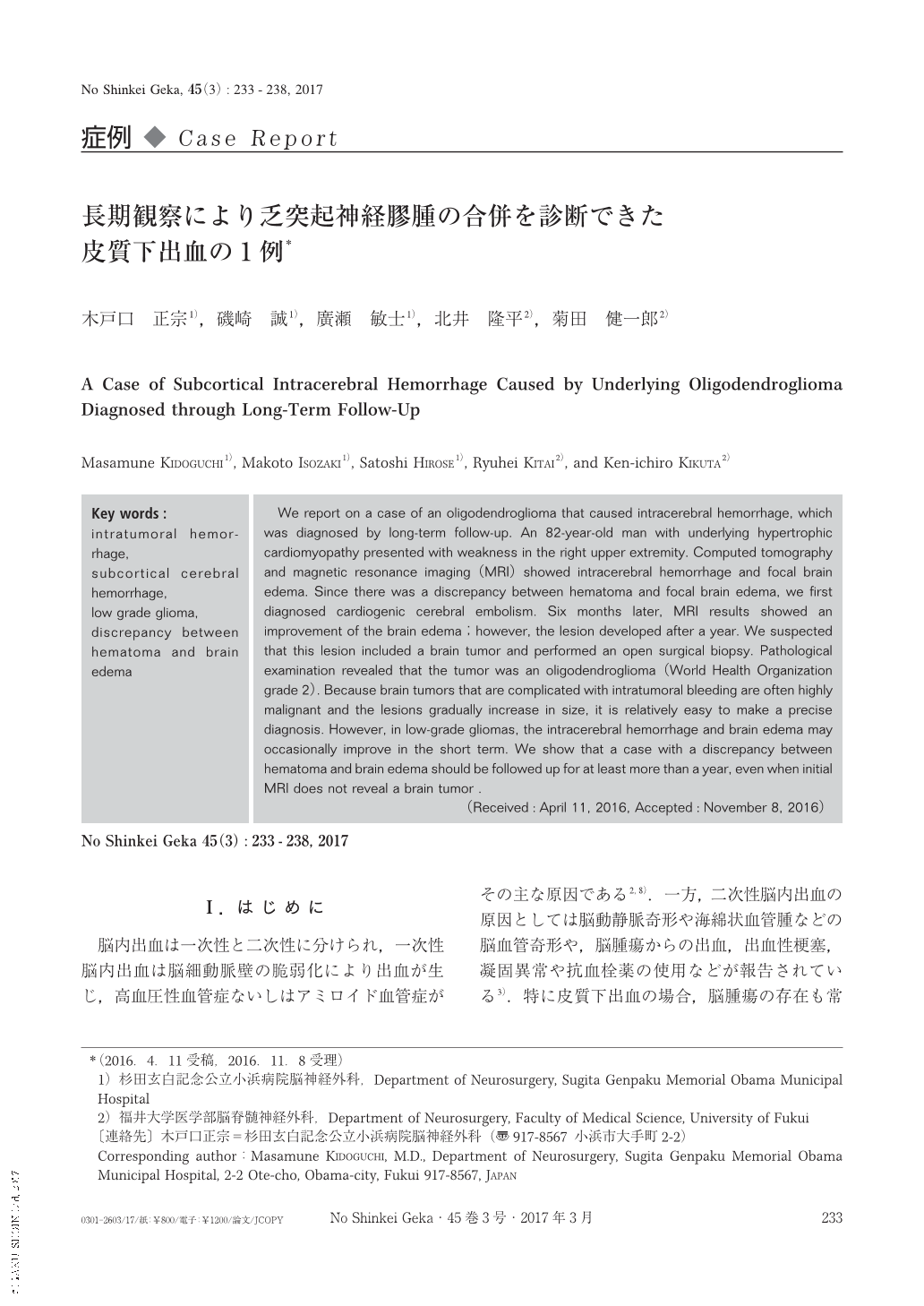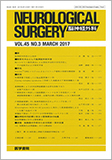Japanese
English
- 有料閲覧
- Abstract 文献概要
- 1ページ目 Look Inside
- 参考文献 Reference
Ⅰ.はじめに
脳内出血は一次性と二次性に分けられ,一次性脳内出血は脳細動脈壁の脆弱化により出血が生じ,高血圧性血管症ないしはアミロイド血管症がその主な原因である2,8).一方,二次性脳内出血の原因としては脳動静脈奇形や海綿状血管腫などの脳血管奇形や,脳腫瘍からの出血,出血性梗塞,凝固異常や抗血栓薬の使用などが報告されている3).特に皮質下出血の場合,脳腫瘍の存在も常に念頭に置く必要がある.通常,脳腫瘍による脳内出血は,転移性脳腫瘍や悪性神経膠腫などの悪性脳腫瘍に多いため4,7,9),血腫周囲の脳浮腫が著明であったり,造影MRI検査で造影病変が認められたりして診断されることが多い.しかし,良性脳腫瘍の場合は,脳浮腫が軽度で造影効果も乏しいことが多く,初期診断において見落とされがちである.今回われわれは,血腫の縮小とともに脳浮腫の縮小を認めたが,長期観察においてその後に脳浮腫の再増大を認めたことで診断に至った,低悪性度神経膠腫の1例を経験したので,診断のピットフォールを中心に,文献的考察を含めて報告する.
We report on a case of an oligodendroglioma that caused intracerebral hemorrhage, which was diagnosed by long-term follow-up. An 82-year-old man with underlying hypertrophic cardiomyopathy presented with weakness in the right upper extremity. Computed tomography and magnetic resonance imaging(MRI)showed intracerebral hemorrhage and focal brain edema. Since there was a discrepancy between hematoma and focal brain edema, we first diagnosed cardiogenic cerebral embolism. Six months later, MRI results showed an improvement of the brain edema;however, the lesion developed after a year. We suspected that this lesion included a brain tumor and performed an open surgical biopsy. Pathological examination revealed that the tumor was an oligodendroglioma(World Health Organization grade 2). Because brain tumors that are complicated with intratumoral bleeding are often highly malignant and the lesions gradually increase in size, it is relatively easy to make a precise diagnosis. However, in low-grade gliomas, the intracerebral hemorrhage and brain edema may occasionally improve in the short term. We show that a case with a discrepancy between hematoma and brain edema should be followed up for at least more than a year, even when initial MRI does not reveal a brain tumor .

Copyright © 2017, Igaku-Shoin Ltd. All rights reserved.


